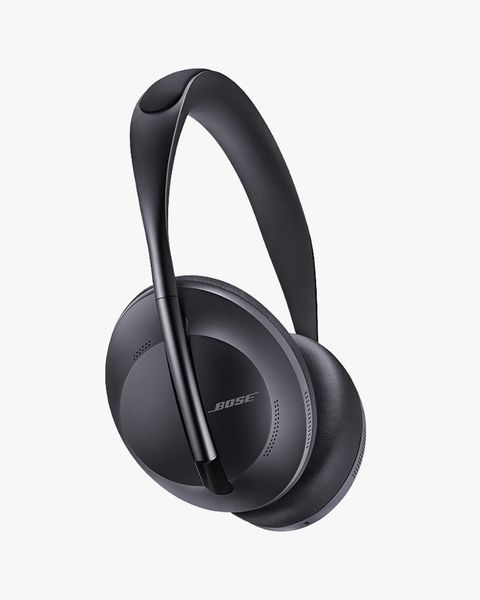Say you want to buy a pair of over-ear noise-canceling headphones but you don't which ones to get. You can buy a decent pair for less than $100, like the Anker's Soundcore Life Q20 ($60), or you can go big on pair that costs $400 or more, like the Bose Headphones 700 ($400) or the even pricier Master & Dynamic MW65 ($500).
No matter which you buy, both noise-canceling headphones are going to do essentially the same thing. They're going to wirelessly connect to your smartphone or laptop and play audio, and they're going use noise-canceling technology to actively block out ambient sounds. So, what exactly makes expensive headphones so darn, well, expensive?
For clarity, we're comparing wireless over-ear headphones that have dynamic drivers. There are more expensive headphones with planar magnetic or eelectrostatic drivers, which are able to deliver higher fidelity audio with less distortion, but headphones with dynamic are way more common. Also, over-ear headphones are typically going to be more expensive than on-ear headphones because they're simply bigger (larger drivers, more material).
Better drivers and design mean better sound.
While high-end audiophile cans and professional-grade headphones use some exotic methods to create sound, like planar magnetic or electrostatic drivers, pretty much every pair of ANC headphones aimed at a general audience use dynamic drivers -- devices which turn electric current into acoustic singles by vibrating a diaphragm with magnetic fields.
But not all dynamic drivers are alike! More expensive headphones like the Bose 700 have more sensitive (and sometimes larger) drivers that can deliver audio with a wider frequency range, meaning higher highs and deeper bass, and less distortion. This contributes to a bigger and better "soundstage" where you can more clearly hear and differentiate between various instruments and vocal tracks.
Inexpensive headphone drivers aren't as refined to clearly separate the midrange, highs and lows, and the result the sound is going to be muddled. And instead of large soundstage where it sounds like the band is playing all around you in a huge amphitheater, the sound is going feel small, like it's happening right outside your ears.
The difference isn't all down to the drivers though. The way the actual cups around your ears are engineered can have a huge effect as well. While cheaper headphones are more than sufficient to get sound to your ears, they generally won't benefit from nuanced design the way more expensive cans will.
High-quality materials are pricey, but pleasant and durable.
One of the best ways to keep cost down is to use cheaper materials. An excellent case study are the Sennheiser HD 450BT ($200) and the Sennheiser Momentum Wireless 3 ($400). Both are excellent noise-canceling headphones with similar features and similar sound profiles, but the HD 450BT are half as expensive because they were made with less premium materials, like leather and metal, and way more plastic. If you're interested in headphones that around the $100-mark, it's almost guaranteed that made of mostly plastic. They're also going to be less durable.
More expensive headphones also tend to be more comfortable, owing not only to the quality of their construction but also the detail of their design. Bose Headphones 700, for instance, have a masterfully designed and precisely weighted headband that evenly distributes its weight across your head instead of at one pressure point, a problem that plagues many cheaper plastic headphones despite their lightness.
More mics and better software makes for better ANC.
Active noise-cancelation is possible to do on the cheap, but only so well. Physically, higher quality have more mics to seek out the sounds to cancel. The Bose Headphones 700 has six dedicated to the cause (and eight total). Anker's Q20, by comparison, sports four. And, of course, the build quality and driver quality factor into this equation as well. Headphones with better drivers will be more adept at producing the sound waves required to physical cancel out droning noises, and better built headphones will be more adept at keeping them out in the first place.
Noise-canceling technology has actually come a long way in the last few years and it has had two effects. First, there are many noise-canceling headphones available than ever before, made by more manufacturers and at different (and cheaper) prices. Second, while the more inexpensive options treat this feature as a binary off or on, higher quality cans have engineered more advanced features, like ambient modes that let you block only some sounds and adjustable EQ modes that let you tweak the strength of your noise-cancelation.


















